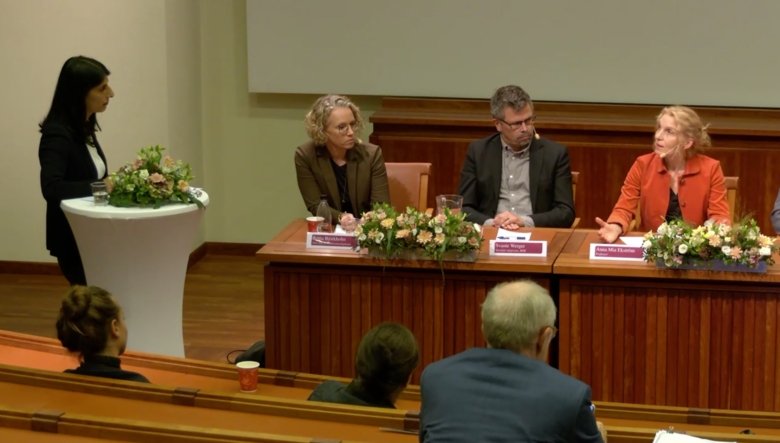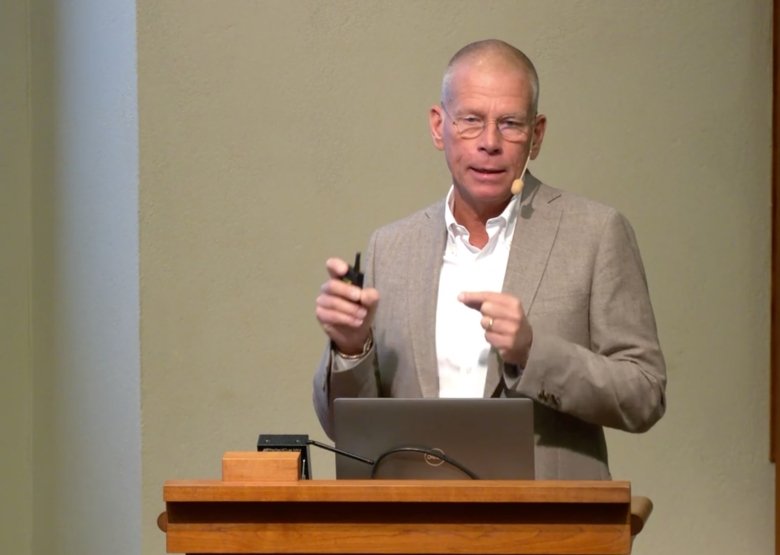KI seminar on the pandemic and future health threats: “The world was unprepared.”

At the end of September, a seminar tilted “How can we prepare ourselves for the next health crisis?” was held at KI with an expert panel including representatives of the Swedish Public Health Agency, the National Board of Health and Welfare and the Swedish Civil Contingencies Agency. Anders Nordström, the Swedish Ambassador for Global Health and Secretary of the WHO’s Independent Panel for Pandemic Preparedness and Response (IPPR), spoke on the WHO report “COVID-19: Make it the Last Pandemic”.
The WHO report “COVID-19: Make it the Last Pandemic” was presented internationally in May 2021.
“One of the conclusions of the report is that the world was unprepared despite previous warnings,” says Anders Nordström, the Swedish Ambassador for Global Health and Secretary of the WHO’s Independent Panel for Pandemic Preparedness and Response (IPPR). “No one had followed the existing recommendations for a similar threat or taken them seriously.”
The WHO report was compiled by international experts under the direction of Nordström, who began the seminar with a look into the work that was done during the ongoing pandemic.
Lack of cooperation

The report contains a raft of recommendations on how to deal better with similar health threats. Nordström reasoned that the lack of multilateral cooperation was devastating and must be handled better in future. One of the proposals is therefore the establishment of a form of security council for global health threats under the auspices of the UN.
“A political agreement is needed on how to reinforce the international system in the longer term, and discussions are currently in train from the perspective of a UN resolution,” he says.
The report also proposes that each country set up a “pandemic general” on permanent standby to take control in the event of a major health threat.
“If we carry through the report’s rather extensive package of recommendations, we’ll have a safer world,” says Nordström. “We won’t be able to prevent outbreaks of similar diseases, but we’ll be able to avoid a repeat of this kind of crisis.”
Combat health inequalities
The seminar gathered together a panel comprising Britta Björkholm, departmental head at the Public Health Agency; Thomas Lindén, departmental head at the Board of Health and Welfare; Svante Werger, special advisor at the Civil Contingencies Agency; Irene Svenonius, Regional Chair of Finance in Stockholm; and professors Anna Mia Ekström and Johan von Schreeb from the Department of Global Public Health at KI. Under the guidance of moderator Nina Rawal, some of the conclusions of the report were discussed from a Swedish perspective.
At one point, the panel were invited to answer the question of what they found to be the hardest side of the pandemic and what could have been done better.
“The hardest thing was the rapid adjustment and all the snap decisions that needed making,” says Björkholm. “We could have shown clearer leadership and more effectively communicated the message that the most elderly were the most vulnerable. We also possibly underestimated just how susceptible care homes were to the spread of infection.”
Both the report and the panel stressed that health inequalities amongst the population exacerbated the pandemic.
“Health inequalities are much more salient in such a situation,” says Lindén. “And if we don’t work to eradicate them in times of calm, we’ll have to live with the consequences when things get serious.”
One of the global lessons that can be applied locally is the importance of trust in communication, argued professor Ekström:
“If we’re to create a genuine dialogue with the whole of society, we need to go to local leaders and utilise local communication channels,” she says. “We need to be better and faster at this.”
Professor von Schreeb added that society will also need a broader defence:
“When building for the future, we must build a society able to resist all types of threat and where climate change is top of the agenda,” he says.
New KI centre gathers experts
KI president Ole Petter Ottersen closed the seminar by talking about the new virtual Health Emergency and Pandemic Science Centre, which was set up at Karolinska Institutet in July.
“We don’t know what crisis will come along next,” he says. “So the centre is also called the Health Emergency and Pandemic Science Center. We need to take a broad-minded, international and interdisciplinary approach and think especially of implementation.”
The aim of the new centre is to consolidate and further develop the structures and competencies built up at KI during the pandemic in the shape of resource teams of internal experts.
Interactive guide to the pandemic
The WHO report “COVID-19: Make it the Last Pandemic” is available in different forms online and is accompanied by copious background material including published scientific papers. There is also “How an outbreak became a pandemic: the defining moments of the COVID-19 pandemic”, a thirteen-step guide to the most significant events during the pandemic from an international perspective.
